How to Use ChatGPT to Write an Essay
Ever wished you could have a super-smart robot buddy to help you crank out those essays the night before they're due? Your prayers have been answered! Say hello to ChatGPT, your new AI best friend from OpenAI.
Equipped with a vast knowledge base and advanced text generation capabilities, ChatGPT can become your steadfast ally in essay writing.
But how exactly can you leverage this innovative tool to draft compelling, research-intensive academic essays? In this article, we're about to dive headfirst into how you can turn ChatGPT into your secret essay-writing weapon, offering step-by-step guidance to infuse cutting-edge AI into your academic journey.
How to use ChatGPT to write an essay
Although using ChatGPT to write essays offers speed, flexibility, and inspiration, it comes with limitations, such as occasional inaccuracies, biases, and prompt sensitivity.
Also, make sure you use ChatGPT ethically when creating your essays, meaning reviewing, editing the generated content, and infusing it with your own insight.
This is known as the 'AI paradox,' which refers to blending AI's power with your creativity, making the tool a stepping stone rather than a crutch in your academic journey.
Now that you are aware of the benefits and limitations of ChatGPT, let's dive headfirst into how you can turn ChatGPT into your secret essay-writing weapon.
👉 You might also like to learn if ChatGPT can be detected.
Generate topic ideas
ChatGPT is a great tool for generating essay topic ideas. You can use ChatGPT for brainstorming. Simply throw out broad ideas or general subjects you're interested in, and the AI chatbot will respond with a range of related sub-topics, inspiring you for more specific essay prompts.
Prompt:
"I want to write an essay about climate change. Can you suggest possible essay topics?"
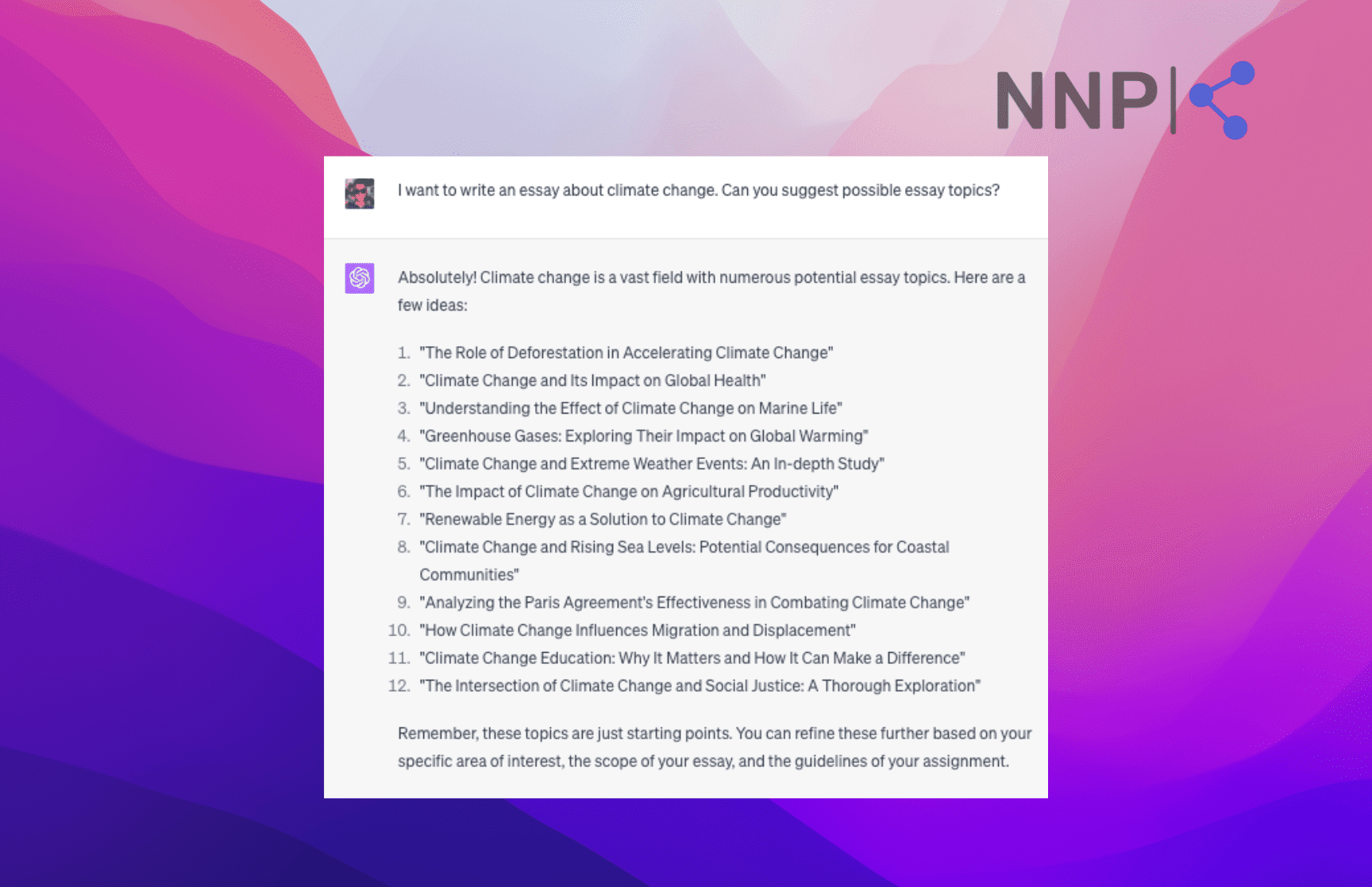
Additionally, you can generate specific ideas by asking ChatGPT direct questions on your subject of interest.
For example, you can ask:
"What are some controversial topics related to artificial intelligence?"
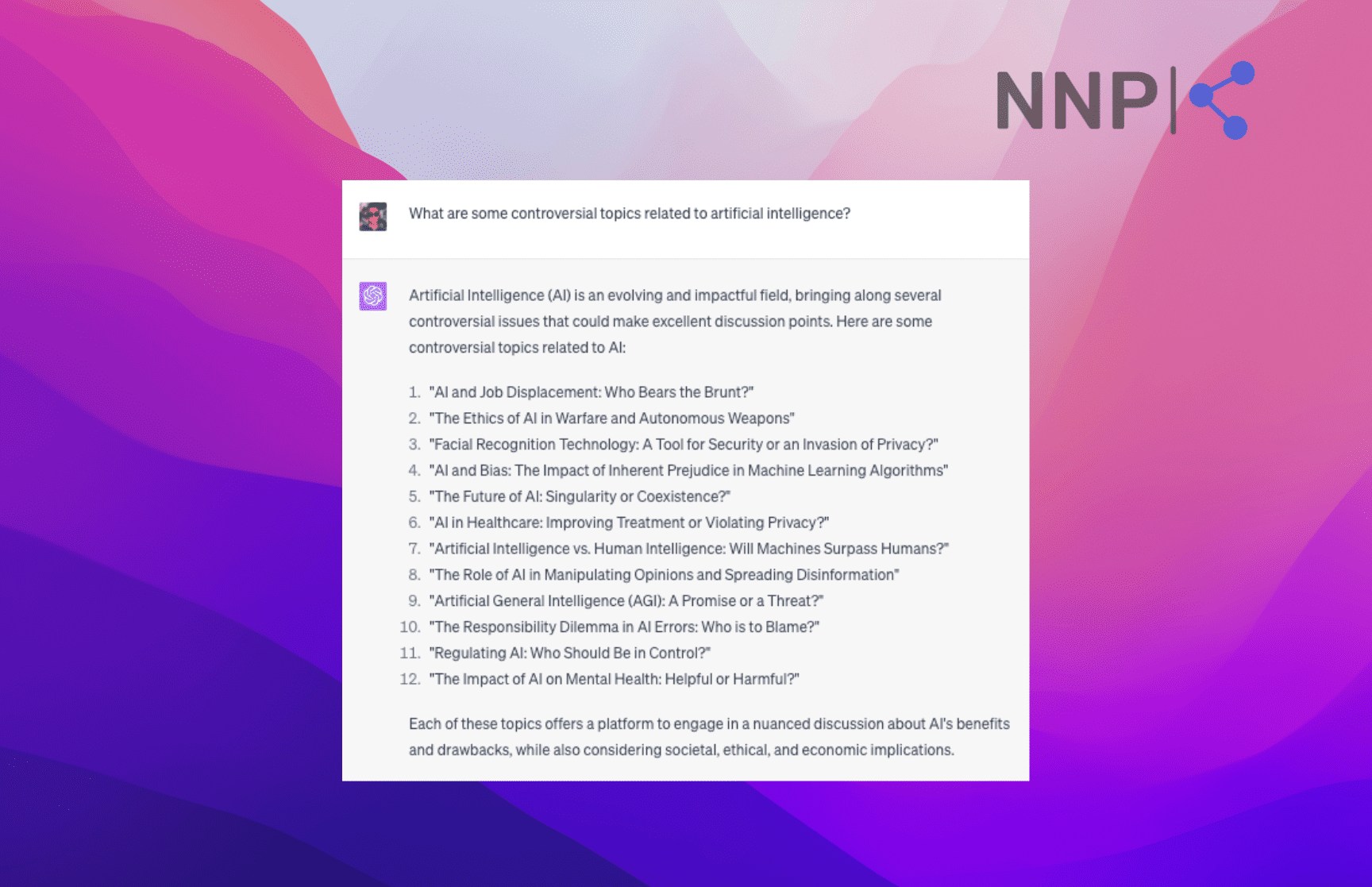
Furthermore, if you have a general topic in mind, ask ChatGPT to help you consider it from various angles. This method can help you create a multi-faceted and comprehensive essay.
Prompt:
"What are different perspectives on the influence of social media in politics?"
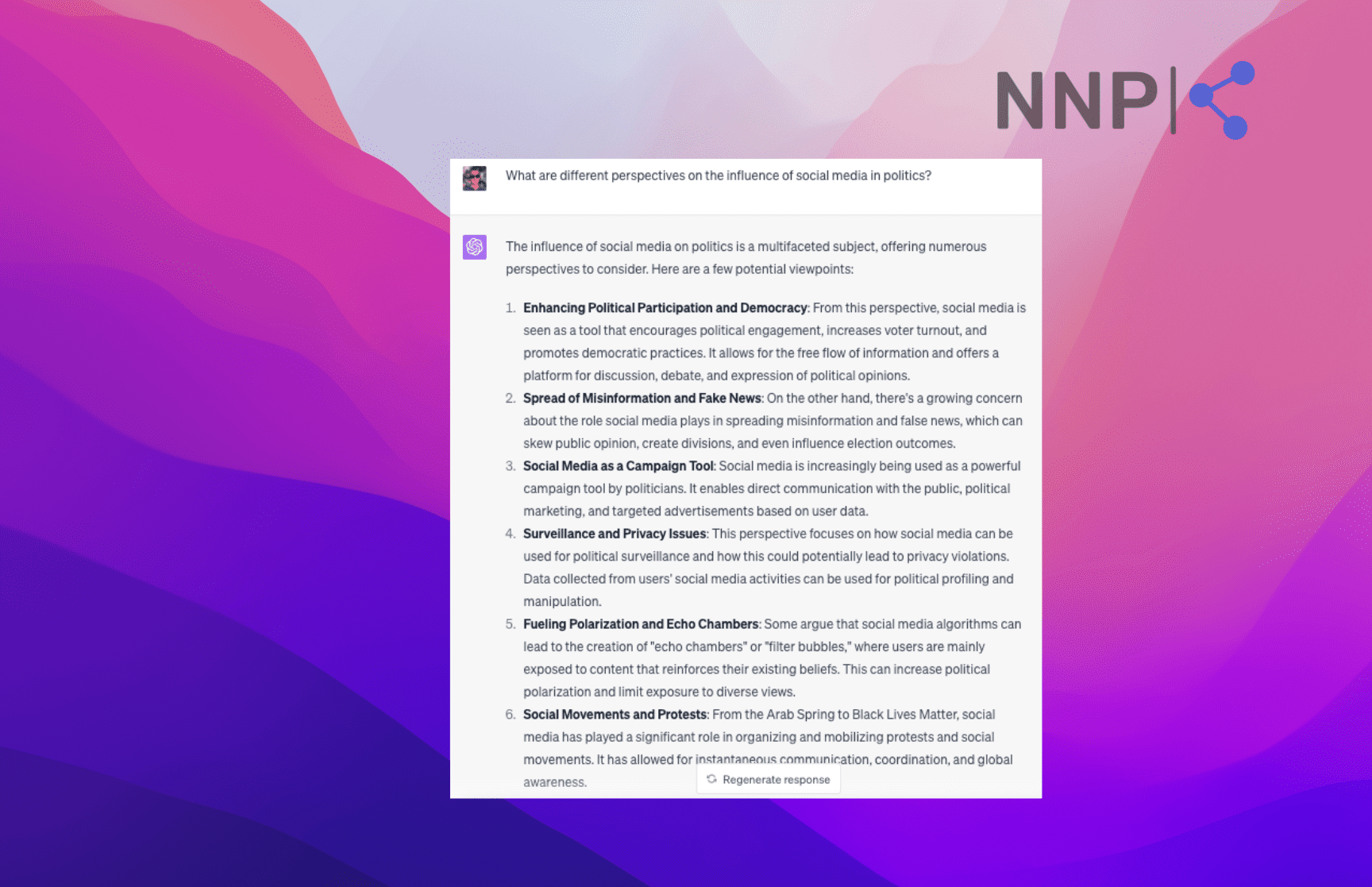
While ChatGPT can provide excellent starting points and ideas, it's crucial to do your research to ensure the topics are relevant and robust enough for your essay.
Research information on the topic
After settling on an essay topic, ChatGPT can be a useful assistant in the research process and in gathering preliminary information.
You can start by asking ChatGPT about your topic, and it can provide a solid starting point. For instance, if your topic is about the impact of AI on employment, ChatGPT can provide a general overview and highlight key points of contention in this area.
What’s more, ChatGPT can help you identify key terms, concepts, figures, or events associated with your topic, which you can investigate more deeply with further research.
Prompts:
"What are the key concepts related to the impact of AI on employment?"
"Who are the leading figures or researchers studying the impact of AI on employment?"
"What significant events or breakthroughs have shaped the discourse around AI's impact on employment?"
"Can you list potential positive and negative impacts of AI on employment?"
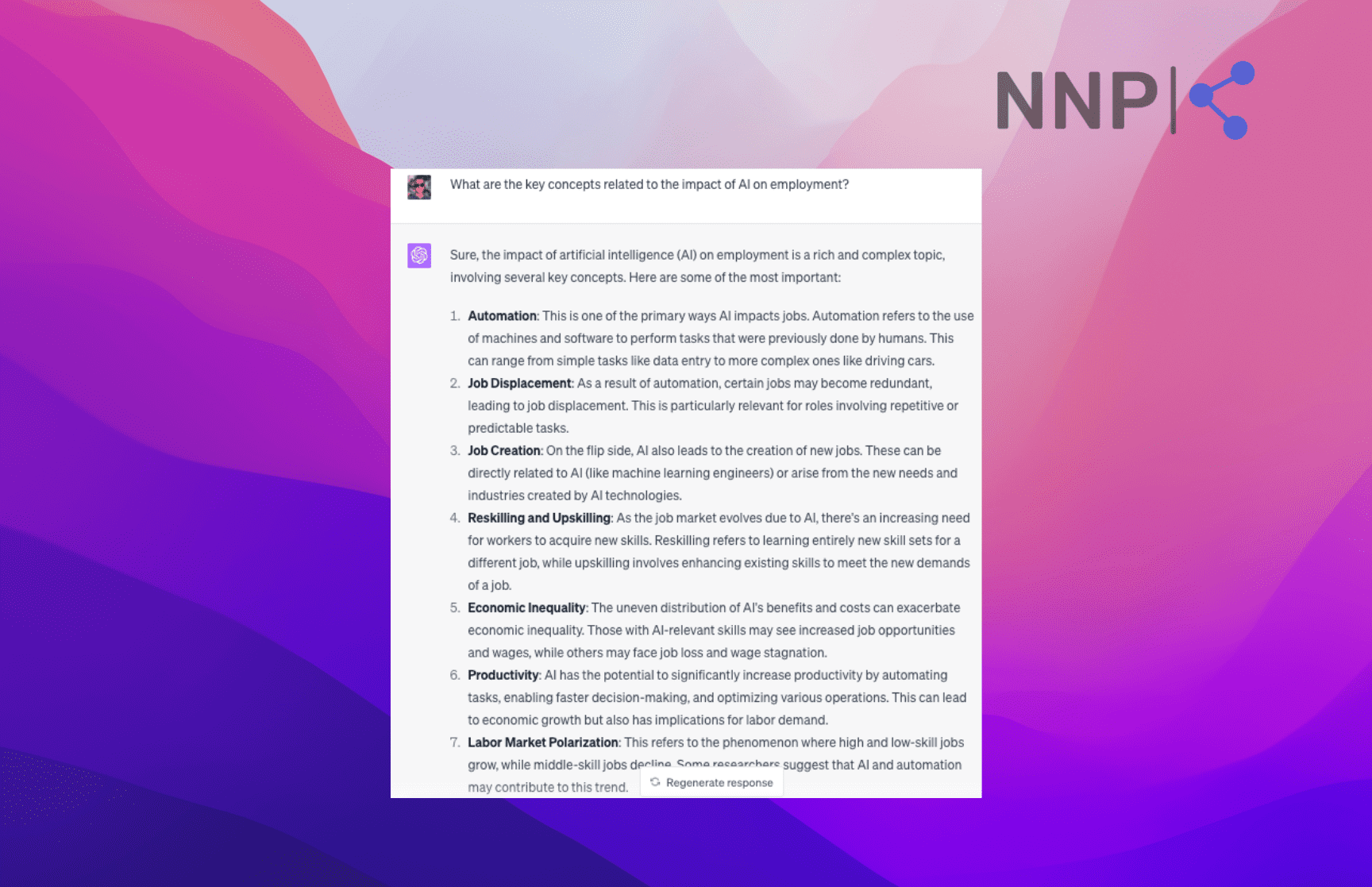
ChatGPT can also suggest valuable resources on your topic so you can deepen your research.
💎 Learn more ChatGPT prompts for research.
Prompt:
“Can you suggest valuable resources for the topic ‘The impact of AI on employment?’"

Note: Make sure to use the Web browsing mode in ChatGPT 4 to get the most up-to-date resources. However, as AI is a rapidly evolving field, you should double-check the resources and back them up with a Google search.
Create an outline
After doing your research and gathering all the needed information, you can ask ChatGPT to provide an outline for your article, focusing on some of the important points, angles, and perspectives you’ve chosen for your essay.
Prompt:
“Please create an essay outline for the topic "The impact of AI on employment," focusing on the following key concepts: Automation, Job Displacement, Job Creation, Reskilling and Upskilling, Economic Inequality, Productivity and Labor Market Polarization.”
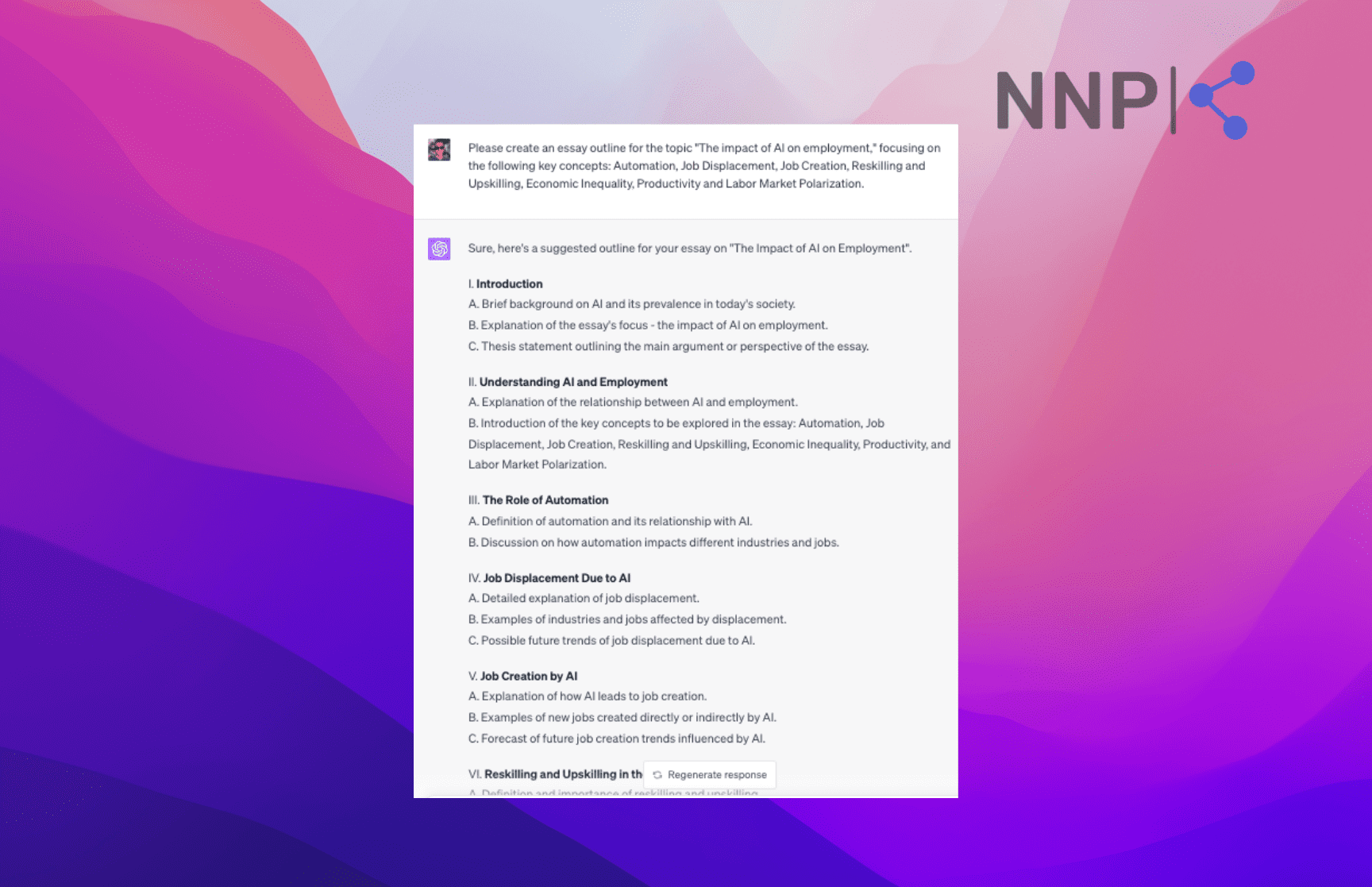
Of course, you can add, remove or rearrange points from the outline according to your vision.
Generate keyword ideas
If you want to include SEO keywords in your essay to optimize it for the web, ChatGPT can be of assistance. While ChatGPT doesn’t explicitly generate keywords as an SEO tool does, it can help find related terms or concepts on a certain topic, which can serve a similar purpose.
Ask ChatGPT to list related concepts or terms for your main keyword.
For example, if your main keyword is "climate change," ask:
"What are related concepts or terms to 'climate change'?"

The AI might generate a list including 'global warming,' 'carbon footprint,' 'greenhouse effect,' etc., which can be used as LSI keywords.
You can also ask ChatGPT to generate synonyms for your keywords. While not all synonyms might be suitable as LSI keywords, some might work depending on the context.
Another way to generate related terms is to ask questions about your main topic to generate natural language responses. From these responses, you can identify and pick LSI keywords. For instance, a discussion about 'digital marketing' might lead to terms like 'SEO,' 'content marketing,' 'social media marketing,' etc.
The terms ChatGPT provides are starting points. You can use a keyword research tool to establish the exact volume and difficulty of the keywords and supplement your understanding of the topic to identify the most effective LSI keywords.
🔎 Speaking of writing with ChatGPT, have you tried the ChatGPT Writer Extension?
Create catchy titles
Now that you have the outline and keywords, it’s time to create a suitable title for the essay that will intrigue people to click and read it.
ChatGPT can be a great resource when brainstorming catchy essay titles. You can feed it information about your essay's topic, argument, or key points, and ask it to generate title options.
If you have no idea about a title, give ChatGPT a summary or a brief description of your essay and ask it to suggest some titles. For example, if you're writing about the impact of social media on mental health, you might ask:
"What are some catchy essay titles about the impact of social media on mental health?"
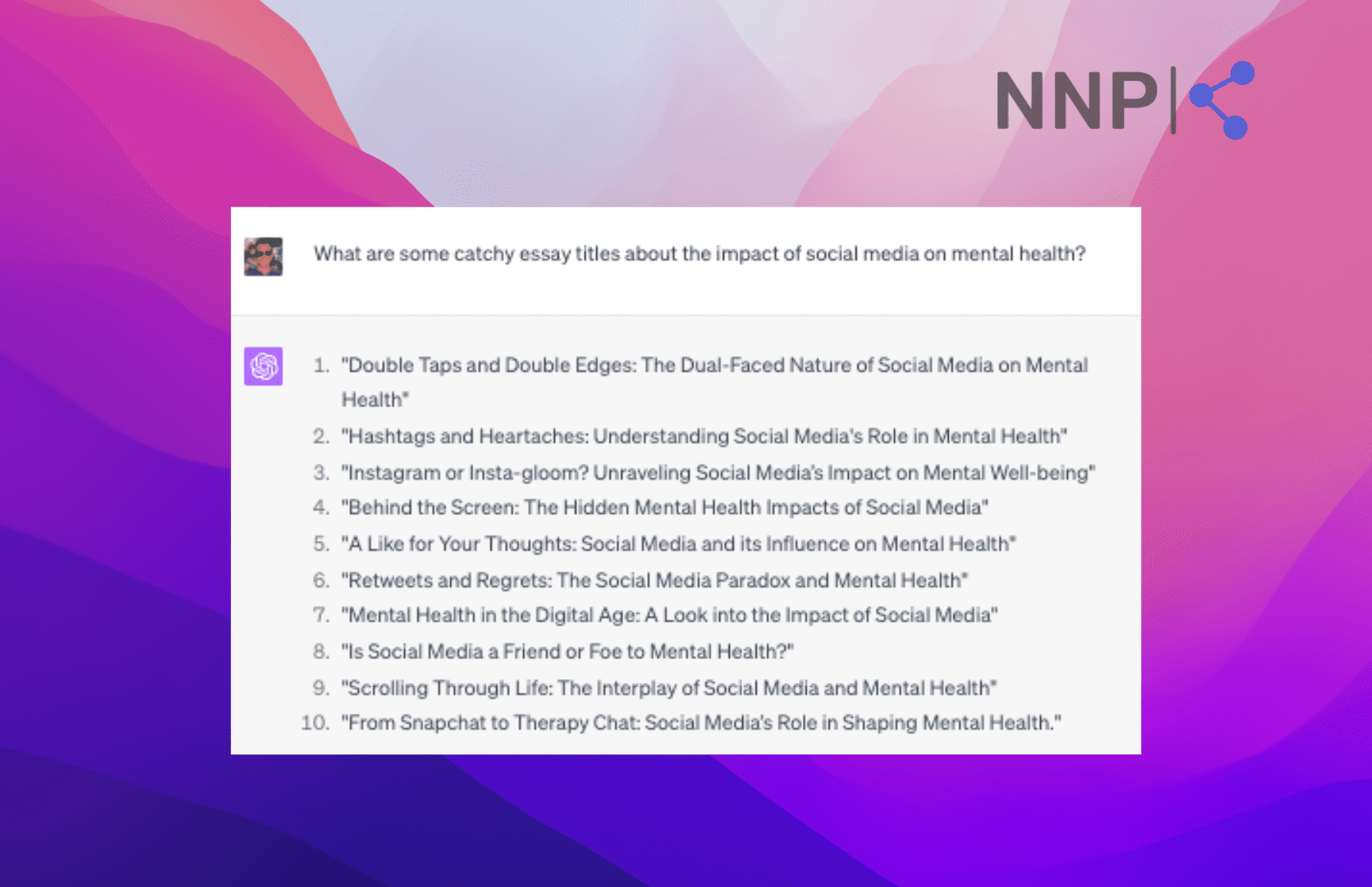
If you already have a working title but want to make it more compelling, you can ask ChatGPT to suggest variations. For instance:
"I have the title 'The Effects of Climate Change on Agriculture.' Can you suggest more catchy versions?"

If you want the title to include your main keyword, ask the AI chat to generate titles based on those keywords. For example:
"What are some intriguing titles using the keywords 'Artificial Intelligence,' 'Ethics,' and 'Future'?"
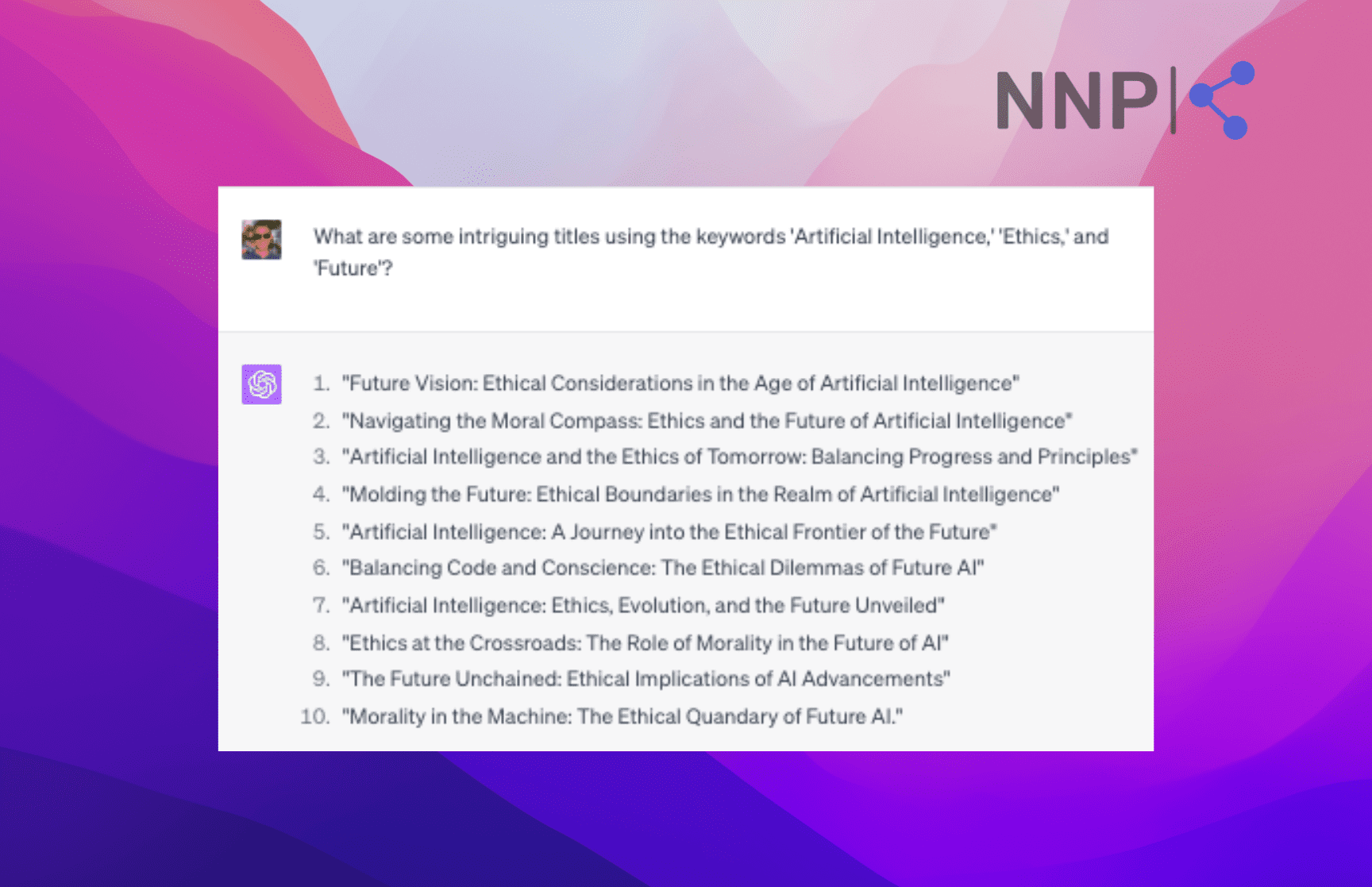
Another way you can make your title more engaging is to frame your title as a question. You can ask ChatGPT to turn your topic or argument into a question. For example:
"How can I turn 'The Impact of Technology on Education' into a question title?"
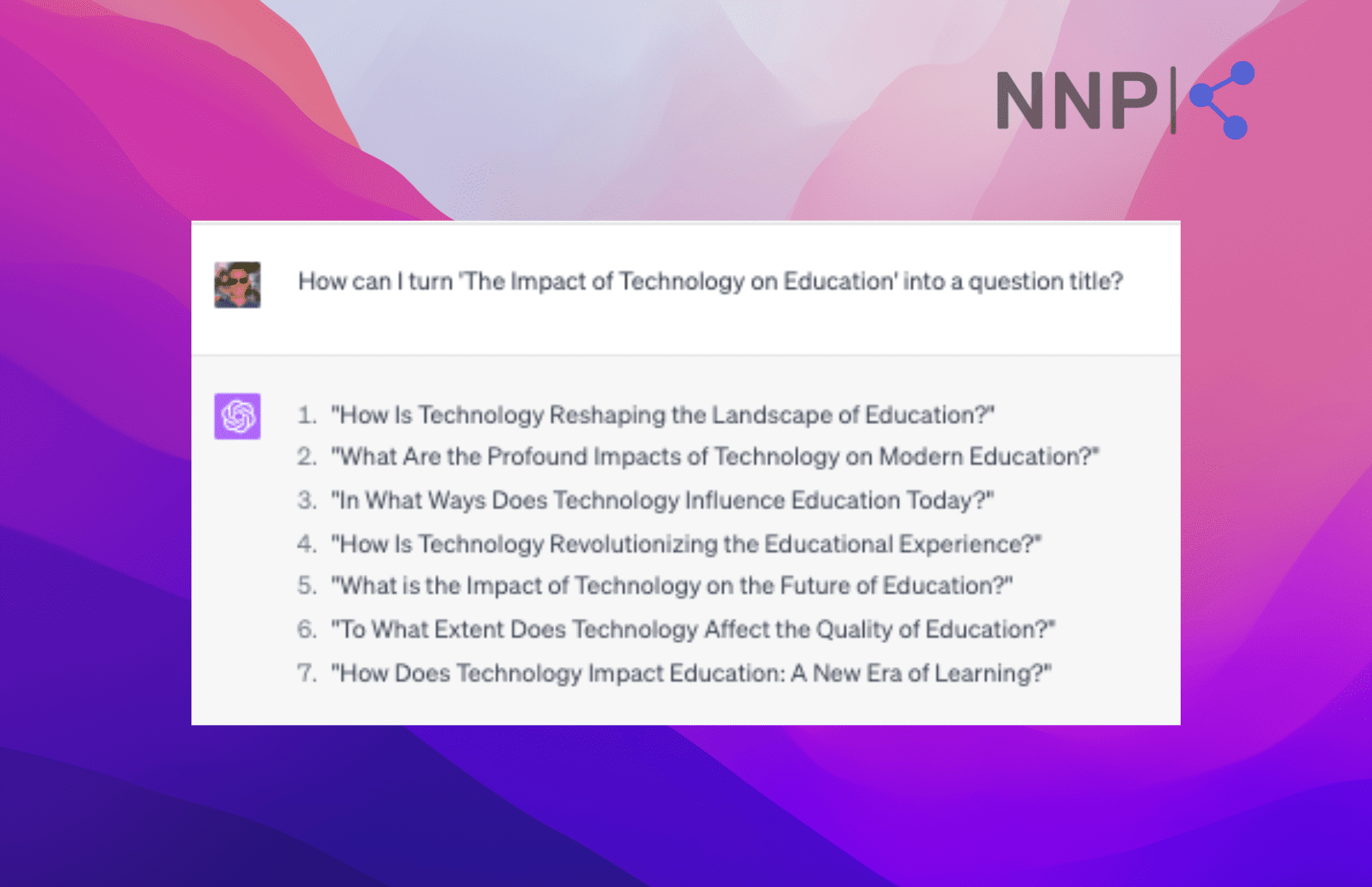
Remember to always check and edit your title according to your essay. Make sure the ChatGPT-regenerated titles accurately reflect the content of your essay and resonate with your intended audience.
Generate a first draft of the essay
As we mentioned above, although ChatGPT is able to write long-form content based on prompts, you should use it to assist you in the process of writing the essay and not as a replacement for you putting in the work.
If you have established your topic, angles and subtopics, you can feed it into ChatGPT and ask it to write a rough first draft of the essay you can expand upon.
At this point, ChatGPT is familiar with your key points and can understand the directions you want to take. For example, you can give ChatGPT the prompt:
“Please write a detailed essay on the topic of "The impact of AI on employment," focusing on the following key concepts: Automation, Job Displacement, Job Creation, Reskilling and Upskilling, Economic Inequality, Productivity and Labor Market Polarization. Please follow the outline you created above. Also, make sure to provide examples and evidence to support your arguments, and consider both the positive and negative aspects of this impact. The tone of the essay should be academic.”

The draft that ChatGPT provides is by no means final, and it should serve as a rough foundation you use to expand your work.
Add your thoughts and opinions
While ChatGPT can create a comprehensive and well-structured draft for an essay, it is essential for you to add your own thoughts, opinions, and ideas to your essay to personalize your essay and make it uniquely yours.
The AI chatbot can provide information and structure for your essay, but it doesn't have personal experiences or insights. Integrating your unique perspective and understanding of the subject matter can make your essay more nuanced and engaging.
Secondly, adding your thoughts to the essay demonstrates your ability to think critically about the topic. It shows that you can analyze the information, synthesize different viewpoints, and form your own conclusions, which is a crucial aspect of academic writing.
Also, using AI-generated text without adding your own input could raise ethical issues, especially in the context of academic writing. It's important to create original work that reflects your understanding and abilities.
And finally, nothing will make your essay more unique than adding your tone and writing style. Rewriting the ChatPT-generated text in your style and voice will make it more human and relatable for your audience.
🥊 Explore the ChatGPT vs. Claude 2 face-off and discover which AI chatbot prevails.
Edit and revise the content
The last step to having the final version of your essay is editing and revising the text. You should always double-check for cohesion, flow, accuracy and relevance.
While AI can generate logically structured text, the narrative might not always flow seamlessly or the nuances might not exactly fit your argument. By reviewing and editing the AI-generated content, you can ensure that the essay flows well, maintains a consistent voice, and effectively communicates your arguments.
Even though ChatGPT is trained on a vast amount of data, it can sometimes produce inaccurate or irrelevant information about your specific topic or argument.
Your review and input are crucial to verifying the accuracy and relevance of the content.
📊 Check out also how to make a table with ChatGPT.
Final words
ChatGPT is a game-changer in the academic sphere, particularly in helping students to draft research-intensive essays. ChatGPT leverages its vast knowledge base and advanced text generation capabilities to assist you throughout the essay writing process; this includes everything from generating topic ideas, assisting in preliminary research, identifying key terms and concepts, suggesting valuable resources, creating essay outlines, and generating keyword ideas, catchy titles and even essay drafts.
Nevertheless, it’s important to be aware of ChatGPT’s limitations when creating content, such as occasional inaccuracies, biases, and prompt sensitivity.
In the end, you must add your unique thoughts, opinions, and ideas to the essay to demonstrate your critical thinking abilities and add a personal touch.
The AI-generated text can serve as a foundation, but you're the architect of the final masterpiece. Ultimately, a thorough review and editing process is crucial to ensure accuracy, relevance, and a consistent flow of the essay.
-(2)-profile_picture.jpg)
